A Trip to Mycenae and an Eventful Re-visit to Palamidi Castle
Today I’m going to visit Mycenae. In addition to owning and running Polyxenia hotel, my host Maria and her sister have a car rental company a few doors down. For a reasonable price, Maria will take me to Mycenae and back. Firstly we’re off to the launderette.
The problem with staying in hotels is that sometimes, there just aren’t the right facilities in which to wash and dry your own clothes. I like to wash my clothes as I go along and can’t bear carrying dirty laundry around with me. The last time I was able to do the washing was on Skyros where the apartment had a large terrace and a washing line etc. Since then I’ve stayed in a hotel in Kalavryta where I doubt the damp mountain air would have dried my clothes on the balcony anyway. I could have paid the hotel to do my laundry but I prefer to do it myself. It’s nothing to do with the additional cost (Lord knows I’ve had a whole heap of those during this trip already!) but just a personal preference.
I don’t have a balcony at all in my little room in Nafplio. Even if I did, I don’t think that my knickers hanging out over the street would add anything to the town’s up-market aesthetic! This must be a common problem in towns like Nafplio that don’t often have garden spaces but there is a solution. Maria tells me that there is a launderette on the outskirts of the town that will wash and dry my clothes. This is the first destination of the day. It’s a walkable distance from Nafplio centre and I would imagine a good proportion of their customers are from the yachting fraternity.
My clothes will mostly cope in a dark wash so they are weighed and priced at 4.50€ per kilo with a minimum spend of 12€. Maria will pick up the washing for me tomorrow at lunchtime. Brilliant service!
Maria drives me out past the orange groves and she tells me about the posts or towers that we can see dotted about the fields. They are a kind of turbine that protects the delicate fruit from frost. I had to do some online research on this as I was curious to understand how they worked. The turbines don’t produce heat, but in principle, they draw down warm air and redistribute it towards the trees. Every day is a school day!
It only takes about 25 minutes to get to Mycenae from Nafplio. We pull up into the car park which is already quite busy. Maria gives me directions and advises me to purchase my ticket and then head straight to the museum. This will give me a better perspective of the site which I can then discover at my leisure. The visitors here are mainly made up of foreign students around 16 years of age. I can pick out German and Scandinavian languages. Whilst the teachers gather their students together, I nip into the queue for my ticket but I can’t help but be preoccupied by the surrounding landscape. I just can’t take my eyes off it.
This scene in front of me is just one example of why I’ve fallen in love with the Peloponnese. The spring flowers backed by the snowcapped mountains are breathtaking. Take just thirty seconds to appreciate this view.
To the left and down several stone steps, I arrive at the entrance to the museum. There are three large exhibition halls on two different levels in this very modern and attractive museum.
According to legend, Mycenae was founded by Perseus. It’s a long and complicated story but hopefully I can give a short and succinct account of the life of Perseus and how Mycenae came to be.
Acrisius the King of Argos had paid a visit to the Oracle of Delphi. She presented him with a prophesy that said that he would be killed by his grandson who would be the son of his daughter Danae. Acrisius wasn’t having any of it, so he built an underground cell where Danae was duly incarcerated.
Boss of the Gods, Zeus was always up for a challenge and he sent down a golden shower which pierced the ceilings and the walls of Danae’s chamber and impregnated her. The result was the birth of Perseus. Acrisius got wind of this but didn’t believe that Zeus was the father. He put Danae and baby Perseus on a boat and pushed them out into the open sea hoping to never see them again.
Eventually the boat came to the island of Serifos where they were brought onto dry land and adopted by a local husband Dictys and his wife. Dictys was the brother of King Polydectes, the ruler of the island. It sounds like they had fallen onto their feet, but these stories aren’t always as simple as that!
Perseus grew up to be strong and handsome and he was always very protective of his mother. King Polydectes had taken a shine to Danae and decided that he wanted her all to himself. As long as Perseus was around, this wouldn’t happen so he began plotting and conniving and thinking of ways to get him out of the picture. One day Polydectes held a grand banquet where he told everyone to bring a gift. He told Perseus that he wanted him to go and seek out Medusa, and bring back her head.
Medusa was one of three beautiful sisters who was singled out by Poseidon and who had been crushing on her. Although he wanted her, she didn’t care less about him and rejected his advances. This powerful God of the Sea along with storms, horses and earthquakes couldn’t take the rejection so he decided to take her chastity from her anyway by seducing her in the temple of Athena. Well, Athena was furious at the desecration of her sacred temple! Did she take her revenge on Poseidon for this sacrilegious and heinous act? Oh no, it was Medusa and her sisters that copped for it. Athena turned them into Gorgons replacing their beautiful hair with a headful of snakes. In addition to that, anyone that looked at them would be turned to stone.
In order for Perseus to cut off Medusa’s head and bring it back to King Polydectes he was going to need help. He called in a couple of favours from the Gods. From his father Zeus, he received an unbreakable sickle and from Hades he received a helmet that rendered him invisible. Hermes gave him winged sandals that would fly him all the way to the land of the Gorgons and finally, Athena gave him a shield with a polished face. The latter was the most important tool as this would enable him to see a reflection of Medusa’s face and thus avoid being turned into stone. He also had a satchel in which to put Medusa’s head after the gruesome dead had been done. Who knows if looking upon her face (albeit a dead one) could still turn people into stone. Better err on the side of caution!
So off Perseus flew to Gorgonsville where he was able to seek out Medusa and to slay and decapitate her. You’d think that would be the end of it but the story goes on. From the blood that was shed from Medusa, the winged horse of Pegasus was borne along with a brother called Chrysaor (with that awful Poseidon said to be the father). Using Hades’ helmet of invisibility, Perseus snatched away Medusa’s severed head and escaped.
Perseus made his way back to Serifos, not before swinging by Ethiopia where more shenanigans were had. He battled one of Poseidon’s sea monsters in order to save the beautiful Andromeda. The condition was that her parents, King Cepheus and Queen Cassiopeia agreed that Perseus could have her hand in marriage. Once the sea monster was slain, he set about his marriage to Andromeda. As the ceremony began, Andromeda’s Uncle Phineus who was already betrothed to her, arrived to put a stop to the proceedings. After a fight, Perseus pulled out Medusa’s head and waved it at the unwelcome guest, turning him to stone. We can only assume that Perseus was wearing his magical mask and everyone else was looking away!
Perseus continued his journey to Serifos where he was welcomed by his mother. It seems that whilst Perseus was away King Polydectes had continued to make unwelcome advances towards his mother. There was only one thing for it. Perseus made his way to the palace of King Polydectes and presented him with Medusa’s head in the satchel. Not believing that Perseus had completed his mission, Polydectes snatched the satchel from Perseus and ripped it open where he was instantly turned to stone.
Perseus made his guardian Dictys and brother of King Poldectes the new king of Serifos and his mother was now safe.
Perseus returned to Argos, the kingdom of his grandfather Acrisius. Now remember that Acrisius had been given a prophecy by the Oracle of Delphi that he would be killed by his grandson Perseus. Fearful for his life he fled the city, hoping to avoid the inevitable.
Perseus being the fine athletic specimen that he was, found himself in the city of Larissa taking part in the athletic games. One of the sports that he excelled in was discus and on this day he took to the arena to display his skills. He took the discus and threw it as far as he could. It flew beyond the arena into the crowd where it struck a man and killed him outright. The dead man was no other than his grandfather Acrisius.
Perseus was very sad and after burying his grandfather he gave the kingdom of Argos to his cousin Megapenthes.
According to legend, Perseus then ascended the throne of Tiryns and founded the city of Mycenae. He would become famous for building the formidable walls of Mycenae, made of boulders fitted tightly together without mortar. These fortifications, which are still standing today, were called “Cyclopean” in antiquity because they looked like they could only have been built by the giant Cyclops. Similar architecture can be found at the archaeological site of Tyrins all within a short distance from Napflio. (see my post on Tyrins in April 2017)
Anyway, back to the Archaeological Museum of Mycenae. The displays include artefacts found all over the citadel of Mycenae. Although the original is in the Archaeological Museum in Athens, the golden funerary mask known as the Mask of Agamemnon is one of the stars of the show. Of course, the exquisitely made and very elegant Mycenean pottery is pretty spectacular too.
I manage to see most of the exhibits before the hoards of students descend upon the museum. Now is the time to head up to the site itself and imagine what took place here in reality and according to legend.
Perseus is believed to have ruled Mycenae and its territories for at least three generations but of course, the story doesn’t end there. Mycenae continued to develop and grow as subsequent dynasties made their mark on the kingdom. In the 13th century BC, the Lion’s Gate was constructed and this is the first thing that you will see when entering the site. Two magnificent lionesses albeit headless, flank a relief pillar above the huge stone plinth, an emblem of the strength and power of the kingdom.
I just about manage to take some photographs of the gate without the bodies of students strewn everywhere. The shade of the gate it seems, is the ideal place to unpack their sandwiches and hang out at.
Walking further up into the site the next section is the granary. Built within the Cyclopean walls, it has two corridors and a staircase that leads to two ground-floor apartments said to have been built in the late 13th century BC. A special class of pottery was found here known as Granary class pottery. Oh those snow-capped mountains in the distance are such a distraction!
As I continue to climb further past the remains of the palace and the artisan’s quarter, I arrive at an entrance to a corbelled entrance. I assume that this is part of the cistern that collected water from an underground spring and transported it along an aqueduct. I’m not paying attention to the information boards but I’m in great admiration of the skill and strength it must have taken to build this structure.
A short distance away I find the actual underground cistern. I can’t resist walking down the steps to look further despite thoughts that either the two ‘S’s’ could be lurking behind stones and in between the cracks! Once at the bottom of this set of steps, a metal grill prevents any further descent. Just as well really!
The information sign says that this cistern is one of the most spectacular achievements of Mycenean building art. The structure is again corbelled and goes to a depth of 18 metres. Water from the spring is transported along the clay conduits and provided a continuous supply of water to the citadel. Very impressive!
A further mosey around the site I arrive at the North Postern Gate that was constructed during the second building phase of the walls. Four monolithic blocks form the two jambs, the lintel and the threshold. The gate was closed with a double wooden door locked with a sliding bolt and in between the gate a small internal court. A road from here leads up to the Megaron. What a feat of engineering and strength!
As I make my way back down to the exit, my eyes and heart are fixed firmly on the landscape. From the various vantage points from the magnificent archaeological site of Mycenae, I can see across to the coast in the South and the snow-capped mountains in the west. My heart has well and truly been stolen by the Peloponnese landscape. Again.
Back at the car park, Maria is patiently waiting for me. Before we head back to Nafplio, we drive a short distance away to the Treasury of Atreus. This is just one of several Tholos or beehive-shaped tombs in the region with this being the best preserved of them all. Although initially called a treasury by archaeologists, it is indeed a tomb built as a burial place for royalty. Instead of being hollowed out of rock, these tombs were built out of stone blocks with a corbelled arch, usually in the shape of a beehive and then covered in earth.
As I arrive at the site a group are just leaving so I take the opportunity to explore the tomb in solitude. Whilst admiring this incredible engineering feat, I notice that when I step towards the middle of the space, the sounds of my footsteps echo way up into the ceiling. Just as I begin to do a little tap dance to the sounds of the ghostly echoes, I spot the next party of tourists on the approach. Sigh!
Once back in the car with Maria, I ask her if she can drop me off at Palamidi Castle. I remember that last time I was here, we caught a bus there and back but I hadn’t yet explored whether a bus would be running. “No problem!” Maria says. The journey back is filled with little stories. As we pass through Tyrins and the archaeological site with its Cyclopean walls, Maria points out a yellow building with terracotta roof tiles on the left. She tells me this is what they call the Agricultural or Rural Prison. It’s for people that have committed minor misdemeanours and during their sentence they are sent to work in the orange groves and farms. I’m intrigued by this and later that day I do a bit of Googling and find the following article. Interesting though I’m unsure how the prisoners are categorised and what the true meaning of ‘minor misdemeanour’ is.
https://www.thenationalherald.com/four-prisoners-walk-away-from-greece-low-security-farm/
Another story from Maria that shows how eclectic our conversations are, is about the postal service in the area. She told me that years ago pensions used to be delivered to retirees by the postal service in cash. You may think that this sounds risky but it was also a benefit to the post person because they were often given tips by the recipients. Of course, this system is no longer in operation, much to the disappointment of many of the posties.
Before driving up to Palamidi, Maria stops for me to re-visit and photograph the Lion of Bavaria. At the entrance to the castle Maria tells me that I can walk back along the road or take the steps down from the castle. We wave each other goodbye and I make my way to the kiosk to pay for my ticket.
As soon as I walk into the castle complex I’m overwhelmed by the memories of my visit six years previously. The view from the walls of this castle is what made me decide that Nafplio is the place that I wanted to retire to. I want to see if I still feel that same emotion when I take a look at that landscape again, but I want to savour it. Before walking around the complex I get out my camera and take photographs of the spring flowers and lizards that scuttle across the pathways and into the rocks. The spring flowers are almost abundant. The only flowers that I can’t see, are the bright purple campanula that grows in almost every crevice of the castle walls. In just another week or so they will be here.
I phone my aunt in South Africa who really enjoys a video call during my travels, allowing her to be with me albeit vicariously. I can’t procrastinate any longer. It’s time for those views.
There are several spectacular views from Palamidi Castle for example this one overlooking the fortress of Acronafplia sitting on the promentary below. The mountain ranges in the distance give a sense of protection and sure make it look pretty!
Just out of sight on the photo above is the beach of Arvanitias. Can you believe that this is early March!
Just a little further around the castle wall will give you a view of the port and harbour and the terracotta roof tiles of the old town. The mountains beyond tempt you to go and explore what lies around them.
However, the view that really makes my heart sing is this one, a view from the castle over the town and to the landscape stretching out to Tyrins and Argos. It may look rather inappreciable to some, and truth be told this isn’t the best photograph of it, but it moves me in ways that not many places have moved me before. I can’t explain it.
I have one final mooch around the castle complex before making my way down.
I’d already decided that I was going to take the steps down from the castle. Now at some point along the way I’ve forgotten that I have bad vertigo, a condition that has got steadily worse over the years. Either that or I absolutely had no idea what the descent from the castle would be like. It started off OK but at that point I was totally oblivious to what was about to come. It was several flights down before I could see how this was going to pan out.
I did have the option to go back up and walk back along the main road, however, as I looked up at how far I’d have to climb (already exhausted from clambering around Mycenae) I decided to stick with it. But it got worse. At one point along the way, a man walking down behind me stopped to ask if I was OK. I think my whimpering interspersed with swear words had alerted him that I was in the middle of a panic attack. I just blurted out the word “vertigo” and waved him past me with a half-hearted and near hysterical laugh.
Every time I turned a corner the walls along the outside edge seemed to be getting lower and lower exposing me to the view below. Vertigo is about balance and not a fear of heights or falling. It’s some kind of inner ear thing I suspect. At several points, I have to sit on the steps and gather myself. My legs have turned to jelly and I don’t know whether it’s from fear or the exertion. Every time I compose myself and start again, I repeat under my breath “look at your feet, watch your feet” in the form of a maniacal sing-song.
About three-quarters of the way down I see a man ‘encouraging’ his son of about 8 years of age to keep on climbing up the steps. The kid really isn’t into it but the father is keen that the boy will complete the walk almost as though it’s a right of passage. He spots my panic-stricken face and tells me that if he passes me on the way down he’ll stop and help! Focus on your son my friend. He may hold this against you for the rest of your life!
The descent doesn’t get any easier as I get closer to the town. Near the bottom there is a set of steps without a protective wall on any side of it. I’m left with no option but to shuffle down on my derriere. How very becoming! Any pride that I may have had threw itself over the cliff edge hours ago!
I eventually make it back down and my nerves are shot! I head straight to a cafe close to the bus station in the hope that I can order a cup of tea and something strong. I’m disappointed beyond words to discover that it only sells tea or coffee. Tea will do for now.
So that was the famous 999 steps! I don’t think that I’ll be doing that again!
When I arrive back at Hotel Polyxenia, Maria who works at the hotel (not Maria the owner) greets me in the reception area. Her English is basic but through gesticulation and a bit of Greeklish she understands my experience exactly! Oh, I can laugh about it ‘now!’
After a lie down with a cold compress and some smelling salts (I exaggerate) I pull myself together and shower and change. This evening I’ve been invited to the home of renowned journalist, PR guru, TV personality and all-round superstar Lorraine Cattell and her husband Charlie.
When I travel, especially when travelling solo it really adds to the experience when I’m able to meet up with inspirational people. I’ve been fortunate to do this throughout my travels in Greece over the years and today is no exception. I’ve been a Facebook friend of Lorraine’s for several years. It’s amazing how through social media you can develop a network of friendships with people who have things in common with you and over time they feel like true friends.
By the time I’m ready to leave the hotel, Alexandra, sister and co-owner of the hotel with Maria is in the reception area. I regale her with my experience of the walk down from Palamidi castle and she tells me that I must crazy! I tell Alexandra that I’m going to visit a friend at her home and want to take her some chocolates. She tells me that L’amande confectionery shop is the best so this is where I go. I ask the lady to select a nice mixture that includes lots of pink chocolates as I know that Lorraine loves this colour!
Lorraine’s home is a fifteen minute walk away and the directions that she had given me the day before were very easy to follow. In my very British way I arrive a little early. I have an absolute horror of being late, even in Greece where punctuality isn’t really a thing. Similarly in Egypt where my husband is from.
I have a lovely evening with Lorraine and Charlie and their friend Melissa who lives in Nafplio also comes to visit. No topics are off the table and I enjoy hearing Lorraine’s anecdotes about her time living in Athens and funny stories about the quirky people that she has met. This has been a wonderful evening and I’m so appreciative of the generosity of the time of these very inspirational people.
Phew! I need a lie down after this post!

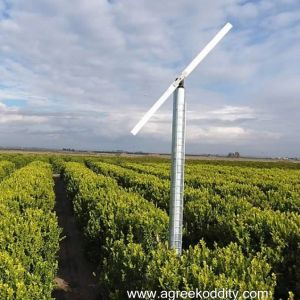

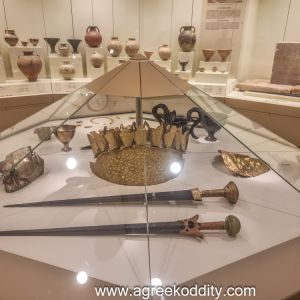

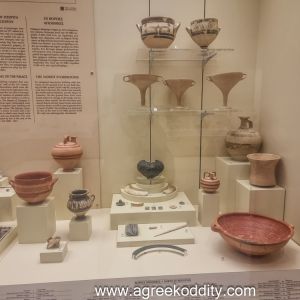
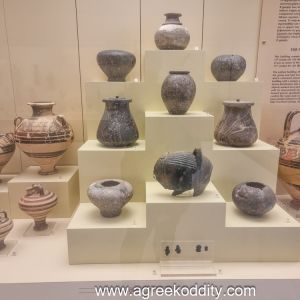





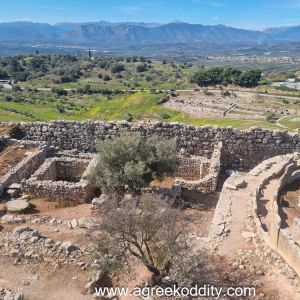

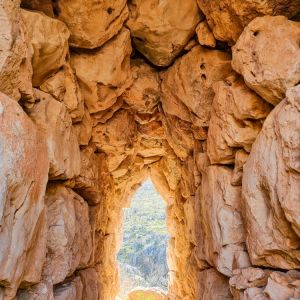
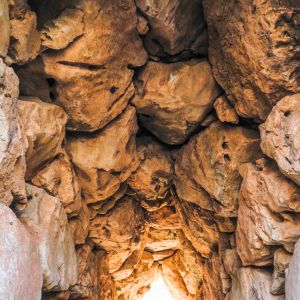

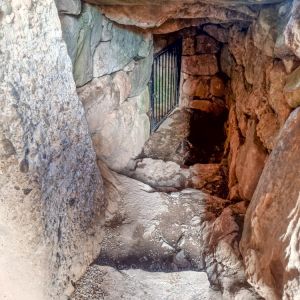


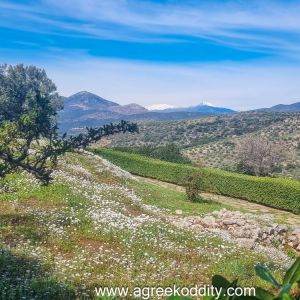

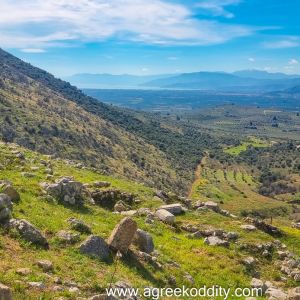

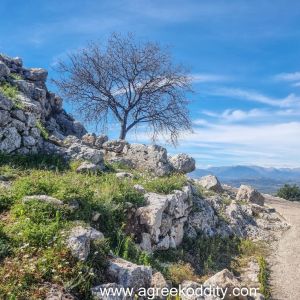
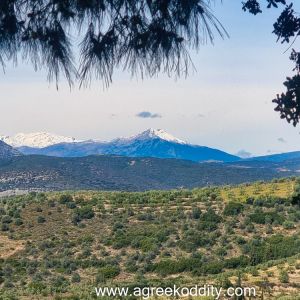
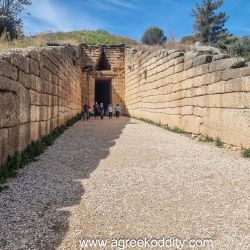
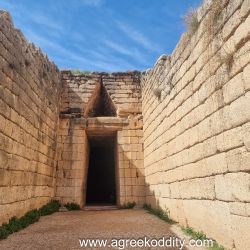

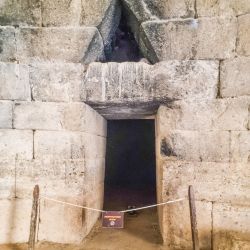


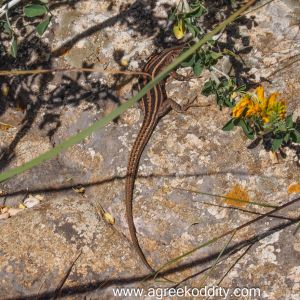
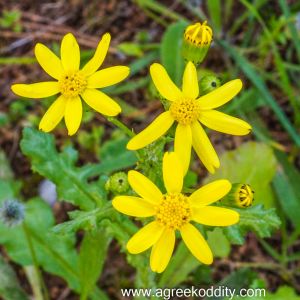



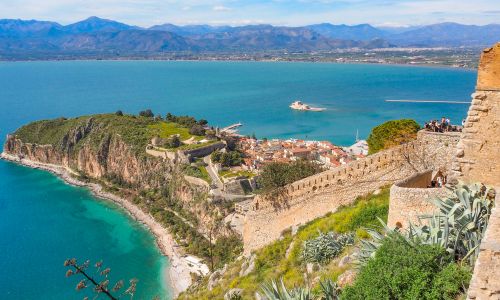
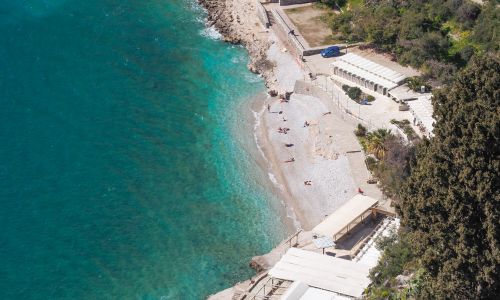

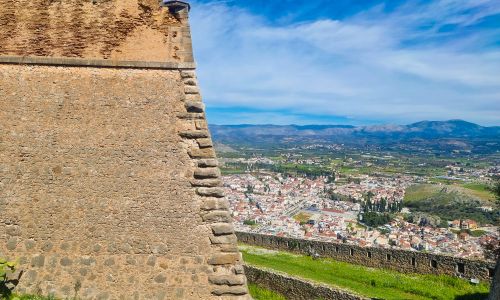
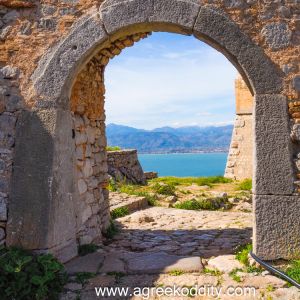

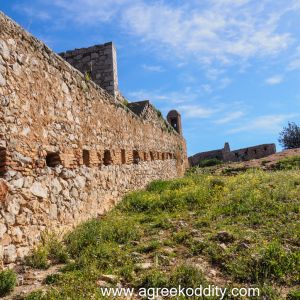
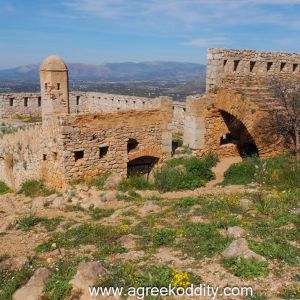
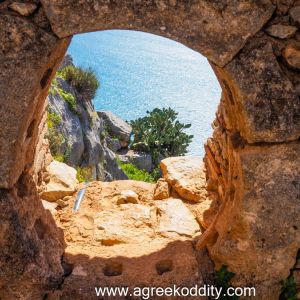
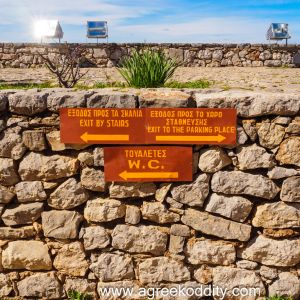
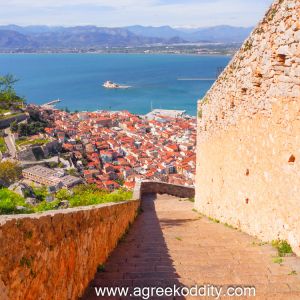

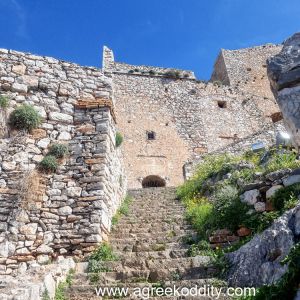
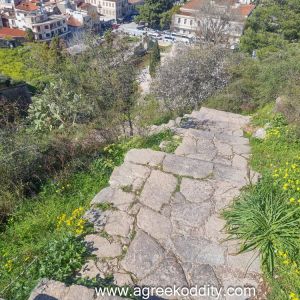
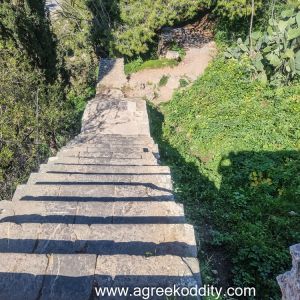







Thankyou got this! I’m solo in Nafplion right now and see that Monday it’s free to climb up those steps!
Good afternoon Patricia. How amazing for you! I think that the steps are free to walk up and down every day but you may be getting free access to the castle today as it’s Easter! Have a fabulous, fabulous time in Nafplio! ❤
Oh my word what a story that was. How did you remember it all. Very intresting though. Loving reading about your adventures and looking on the map where you have been. Bet you were exhausted after those steps. Stunning views
Aww thank you Wendy. I remember it all from my photo’s – as soon as I look at the photo I know exactly where I was and what I was doing. Good to know that the old brain cells have still got life in them! 🙂 Exhausted wasn’t the word – nervous wreck is more like it! 🙂 I hope you’re looking forward to your holiday – it will be here before you know it!